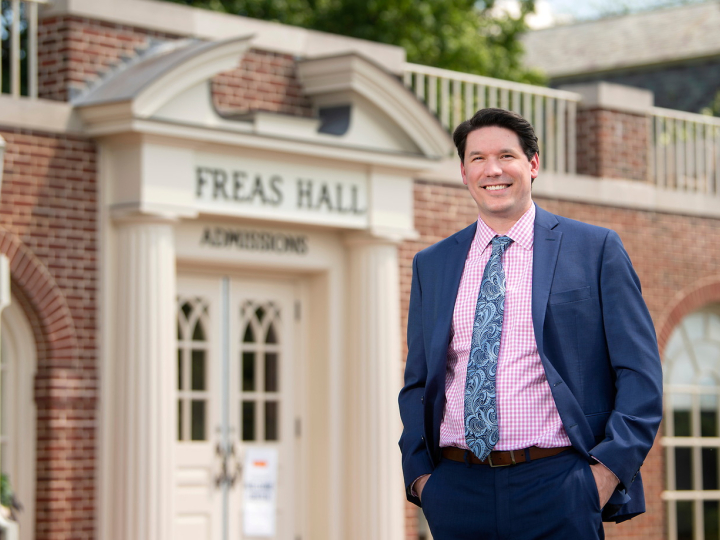The Many Things We’ve Made
May 6, 2015
From a tourniquet that can suppress a bleeding soldier's wound precious seconds faster, to a better way to share your summer jams playlist with friends, the many things Bucknell engineers made this academic year were on display at the Bucknell Engineering Design Expo 2015.
The expo showcased senior design projects created by students majoring in biomedical engineering, chemical engineering, computer science, electrical and computer engineering, and mechanical engineering, as well as projects created in six project-based design courses. Many of the participating departments have hosted their own design exhibitions for more than a decade, but this year's was the first to bring so many projects together at the same time.
"We want to cultivate in students an appreciation of the variety and depth of the work that their colleagues have done," said Margot Vigeant, associate dean of engineering and the Robert L. Rooke Professor of Engineering. "They know their own projects really well, but what has everyone else been up to? We want to have conversations across disciplines."
Some of the featured projects solved pressing problems or made life easier for residents of the surrounding community: A team of electrical and computer engineering students developed an iPod-based inventory scanner to help librarians in the Union County Library System, and a team of mechanical engineers designed and built an automotive lift positioning system for a client who uses a mobility scooter, making it much easier to load the scooter into a vehicle.
"There are videos of these lifts created by the manufacturers, usually with an able-bodied person demonstrating, and it looks easy. But if you see a video of someone who's mobility-impaired trying to use the same lift, you can see them really struggle," said J.B. Ring '15, a mechanical engineering major who helped design the scooter lift as a senior design project. "Our idea was to try to improve usability for handicapped people."
Other projects required just as many hours of planning and hard work to create, but were designed with fun in mind: The team of computer science and engineering majors Alec Pflaster '15, Luke Miller '15 and Matthew Berman '15 created Tesseract, a mobile app that lets users share music playlists with their friends, and a team of nine mechanical engineers built a buggie to compete in the Society of Automotive Engineers' mini-Baja competition at Auburn University.
"It's powered by an eight-horsepower engine, has 10 degrees of suspension travel and can go up a 30-degree slope at 15 miles per hour," said Odinmma Ofili '15 of the mini-Baja team."I want to start a car company, so this was a fantastic opportunity to me."
Some projects were also developed in collaboration with industry partners, providing participating students real-world experience and valuable chances to network with experts in their career field. Projects created for industrial clients included a robotic device that might soon adorn a display at Universal Orlando Resort and an emergency clamp to quickly stop severe battlefield blood loss developed with ER doctor Timothy Vollmer of Geisinger Health System.
Karina Simpson '15, a biomedical engineering major who worked on the emergency clamp, said the device is more rugged and can be applied nearly 20 seconds more quickly than the air-pressure based junctional tourniquets the U.S. military currently uses.
"We want to issue this to every soldier in combat," Simpson said. In coming years, Vigeant hopes there will be even more to see. She said the Engineering Design Expo will continue to grow to bring in projects from additional majors and courses, and even projects created independently by students.
"We really want this to be a celebration of engineers making things," Vigeant said. "These are the masterworks created by our apprentice engineers before they've launched into the world. We want everyone to see and be excited by that."

